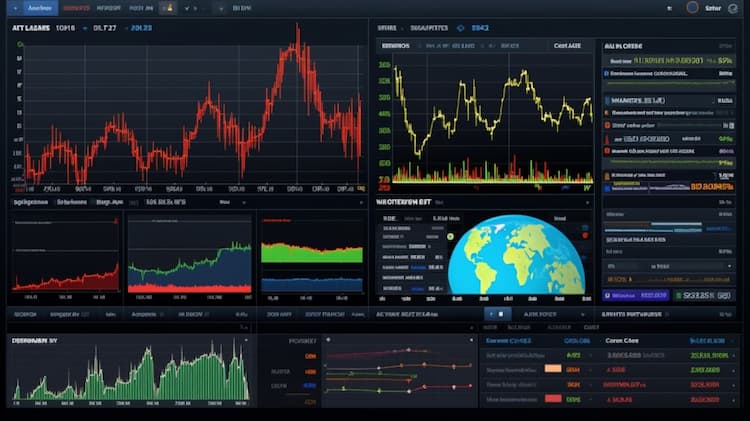
INDA VS INDY: A Comparison of ETFs
Exchange-Traded Funds (ETFs) have revolutionized the investment landscape, offering diversified exposure across various sectors and asset classes. In this article, we will conduct a comprehensive comparison between two prominent ETFs: INDA (iShares MSCI India ETF) and INDY (iShares India 50 ETF). We'll delve into their tickers, full names, issuers, sectors, top holdings, capitalization, strategy, tracking, and exposure.
INDA VS INDY: Overview
INDA and INDY are both ETFs focused on providing exposure to the Indian equity market. While INDA aims to replicate the performance of the MSCI India Index, INDY tracks the Nifty 50 Index, composed of the 50 largest Indian companies. This distinction in index composition leads to varying sector allocations and risk profiles that we'll explore further.
INDA VS INDY: Sectors and Top Holdings
The INDA ETF offers broad exposure to various sectors within the Indian market, including technology, financials, and consumer goods. Its top holdings consist of prominent companies like Infosys, HDFC Bank, and Reliance Industries. In contrast, INDY's focus on the Nifty 50 Index leads to concentrated exposure in sectors like finance, energy, and information technology, with holdings such as HDFC Ltd, Reliance Industries, and Infosys. Understanding the sectors and top holdings can aid investors in assessing the diversification and concentration levels of each ETF.
 INDA overlap INDA VS INDY: A Comprehensive Comparison of ETFs
INDA overlap INDA VS INDY: A Comprehensive Comparison of ETFs
INDA VS INDY: Capitalization and Strategy
INDA boasts a substantial Asset Under Management (AUM), indicating its popularity among investors seeking exposure to the Indian market. The fund's strategy is aligned with the MSCI India Index, encompassing a broader spectrum of Indian stocks. On the other hand, INDY's focus on the Nifty 50 Index results in a more concentrated portfolio of large-cap Indian companies. Investors must consider these differences in capitalization and strategy when evaluating potential returns and risks.
INDA VS INDY: Tracking and Exposure
The tracking methodologies of INDA and INDY are rooted in their respective benchmark indices. INDA aims to closely follow the performance of the MSCI India Index, which includes a broader range of companies. Conversely, INDY's tracking of the Nifty 50 Index offers exposure to a narrower selection of large-cap Indian stocks. Investors seeking comprehensive market exposure might find INDA more suitable, while those interested in a concentrated portfolio of major Indian companies might lean towards INDY.
Conclusion
INDA and INDY provide distinct avenues for investors to gain exposure to the Indian equity market. Analyzing their index replication, sector allocations, top holdings, and tracking methods is crucial in making informed investment decisions. For deeper insights into these ETFs' holdings, correlations, and overlaps, investors can turn to ETF insider—an intuitive app offering valuable information on various financial instruments.
Disclaimer: This article does not provide any investment advisory services.
Sources:
INDA ETF issuer
INDA ETF official page
INDA quote and analysis
Discover the top holdings, correlations, and overlaps of ETFs using our visualization tool.
Our app allows you to build and track your portfolio.
To learn more about the INDA iShares MSCI India ETF, access our dedicated page now.












